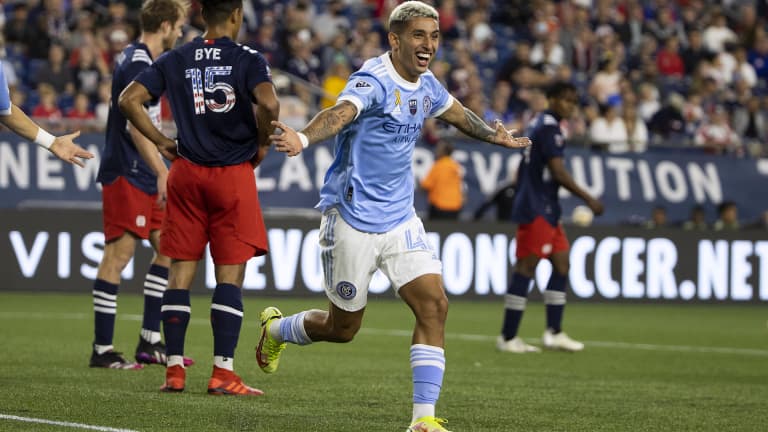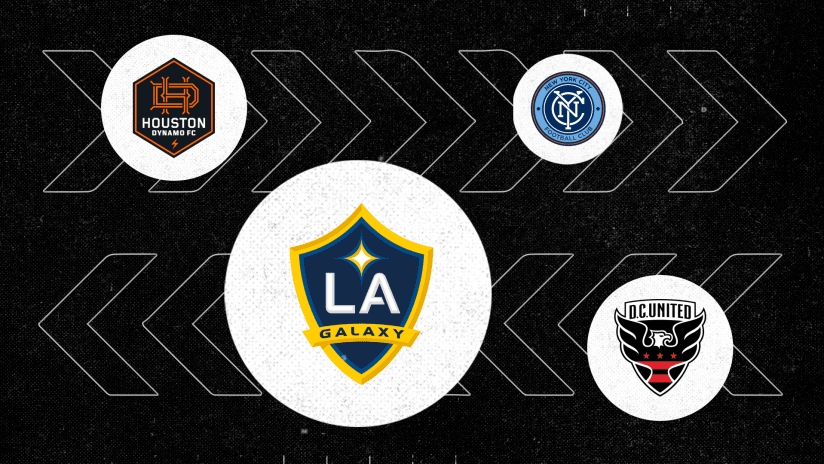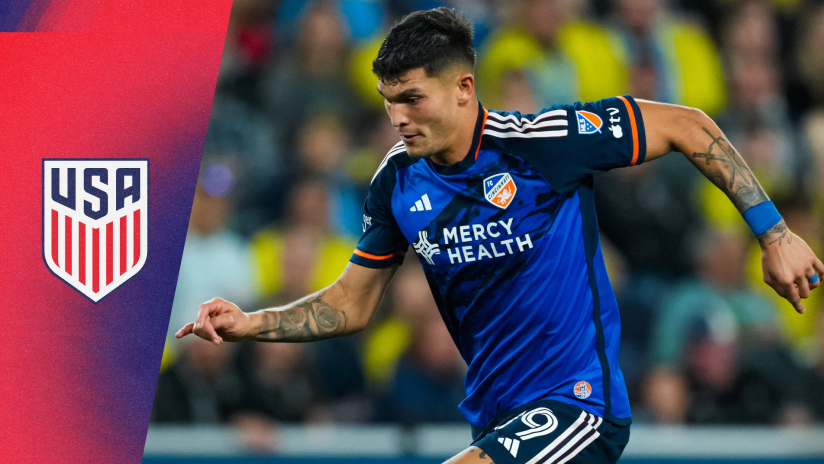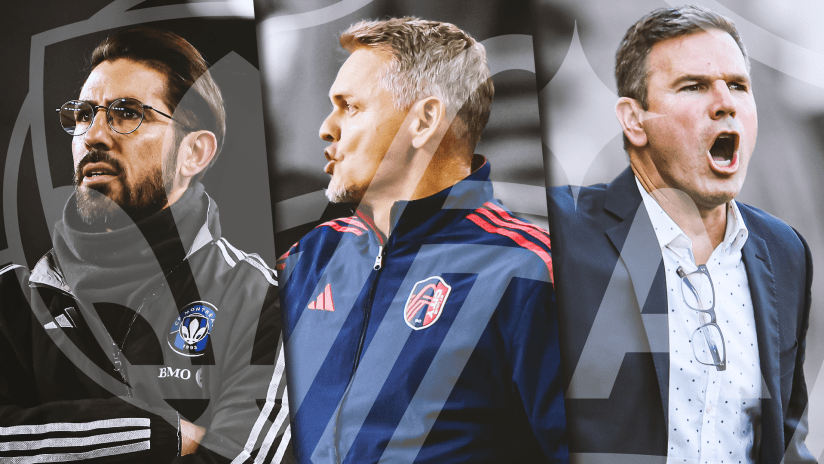The LA Galaxy’s acquisition of Dejan Joveljic from Eintracht Frankfurt wasn’t a signing that broke the internet. It wasn’t a club-record fee and it wasn’t all that out of the ordinary for recent MLS transfer dealings (in a good way).
But it perhaps signaled an evolving new trend.
The Galaxy spent $4 million on a young international striker currently at a Bundesliga club, one who just tore up the Austrian league on loan and had plenty of options elsewhere in Europe. That's not a typical MLS acquisition.
Thanks to MLS' new U22 Initiative, the Galaxy didn’t need to incorporate the acquisition cost into their budget nor use a precious Designated Player spot on the signing.
Or as one chief soccer officer at an MLS club put it to me this summer: "This is going to be so transformative.”
That's just one application in the rule's nascent days, and that example's not meant to heap pressure on Joveljic in particular. The specific player isn’t the point, but rather that's the kind of player who would have been very difficult to fit underneath MLS' salary cap/budget structure in the past without using a finite DP spot on an unproven player.
How it works
We’re only in the U22 Initiative's first season and it's much too early to know exactly how it will impact roster-building or how the league’s leading minds will optimize its use. But the early signs seem positive, particularly according to CSOs around MLS.
First, let’s get the nitty-gritty roster rules out of the way, hopefully breaking down the U22 Initiative to its most simplistic and consumable understanding:
- Each club can have up to three U22 slots (so long as they don’t have three senior DPs over the max budget charge)
- A player must be 22 years old or younger in the first calendar year he joins to be eligible for a U22 slot
- A player can continue to occupy that slot until he turns 25
- A player cannot exceed the maximum salary budget charge to be eligible
- U22 players will hit the cap at $200,000 between ages 21-23 or $150,000 for ages 20 and younger
The cap and budget benefits are huge.
“Players like Joveljic, or anyone who can end up on the U22 slot, should be considered young talented players who need some development,” Galaxy GM Dennis te Kloese told MLSsoccer.com. “There’s the possibility to add a transfer sum to it, which, without those slots, would be hardly possible.”
Normally, a player’s budget charge would be his contract + transfer fee, amortized over the entire deal. That means if a club spent $4 million to acquire a player and signed him to a four-year deal, his budget charge would be an extra $1 million on top of his salary.
“Essentially, you can have three players where the maximum amount of combined money taken out of your budget is $600,000,” NYCFC sporting director David Lee said. “The fixed benefit is really crucial. Knowing a player will be $200,000 on the cap until they graduate or are sold, it’s huge.”
On the field, it can be another method to expand depth and maximize the value of every cap dollar available.
Different variations
Not all teams will use it the same, though. Some will prioritize scouting and acquiring talent, while others will use it as relief to keep highly talented academy products at the club for longer.
In year one, not many MLS clubs have used all three spots. NYCFC are one, acquiring attackers Thiago Andrade and Santiago Rodriguez this spring, while reclassifying midfielder Nicolas Acevedo to that roster designation. To ensure all three spots would be available, they utilized their final DP spot on rising Brazilian winger Talles Magno, signed as a young DP.
“That was clear for us, that was going to be the strategy,” Lee said. “There was never any consideration to add two (senior) DPs. We knew we wanted to add three players into this category. We firmly believed it would help long-term building a strong roster this year and years to come.”
Atlanta United have also used all three U22 Initiative slots, signing three players: Santiago Sosa, Franco Ibarra and Erik Lopez.
The Colorado Rapids have used it both internally and externally. The club inked homegrown standout defender Sam Vines to a contract extension ahead of the season, putting him on a U22 Initiative slot. It was clear his future would be in Europe, but that flexibility allowed Colorado to be patient and await the right offer.
“Being able to keep some of our top young homegrown players for maybe an extra year or two is wonderful,” Rapids EVP & general manager Padraig Smith said. “Then being able to attract some of the best young talent from outside the league as well is great. We’ve used it both ways, we’ve been able to make our team better.”
The right deal for Vines did arrive quickly, with the US men's national team left back joining Belgium's Royal Antwerp on a club-record deal in the summer. A few weeks later, the club announced his replacement: Brazilian left back Lucas Esteves on loan from Palmeiras, added to the roster via the U22 Initiative.
The Galaxy also diversified their use of the mechanism. In addition to acquiring Joveljic, they signed defender Julian Araujo to a contract extension and put him on a U22 Initiative slot.
“I think it’s a big step forward, having the ability to keep young players here – like in the case of Julian – in salary situations that’s very affordable for the teams," te Kloese said. "That’s a big step forward.”
Alexandru Matan (Columbus Crew), Leo Chu (Seattle Sounders), Santiago Moreno (Portland Timbers), Deiber Caicedo (Vancouver Whitecaps), Pedro Vite (Whitecaps), Issac Atanga (FC Cincinnati), Moussa Djitte (Austin FC), Federico Navarro (Chicago Fire FC) and Rodrigo Pineiro (Nashville SC) are some other players acquired around MLS under the U22 Initiative in 2021.

NYCFC U22 Initiative signing Santiago Rodriguez celebrates scoring | Winslow Townson-USA TODAY Sports
What's the future?
The best-case scenario for the U22 Initiative's evolution is twofold: First, it adds quality to clubs and thus deepening rosters in the short-term, while then developing and transferring that talent out in the long-term.
“The concept was around for quite a few years before it got implemented,” Sporting Kansas City manager and sporting director Peter Vermes said. “Obviously some teams have taken advantage of it, but some of it is still wait-and-see. For us, those are roster spots that we’re going to be very active in. For us, it’s making sure the players we find really fit us. They’re young, they should have a good runway to be successful. I think it’s a great initiative, I really do, and a lot of teams have acted on it in a meaningful way. But time will tell.”
It's early days. Youth scouting and investing in young talent isn't a foolproof plan – sometimes those players don't pan out – but the vision is there.
“It’s probably a little bit too early to see the long-term, lasting impact it’ll have, but I think it’s another wonderful mechanism for which we can track the type of quality young player into this league,” Smith said. “I think will be critical in success as a club and the league’s success overall. We as a league are very clear where we want to go, and we’re very clear as a club where we want to go. It fits very nicely within our philosophy and vision at the Colorado Rapids. We’re excited about it. I think it’s working, I think it’ll help the league get better.”













